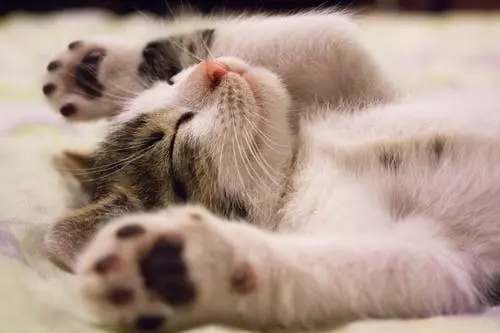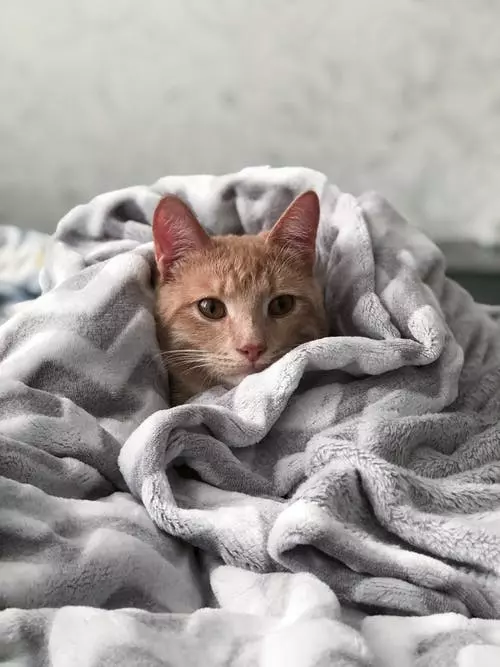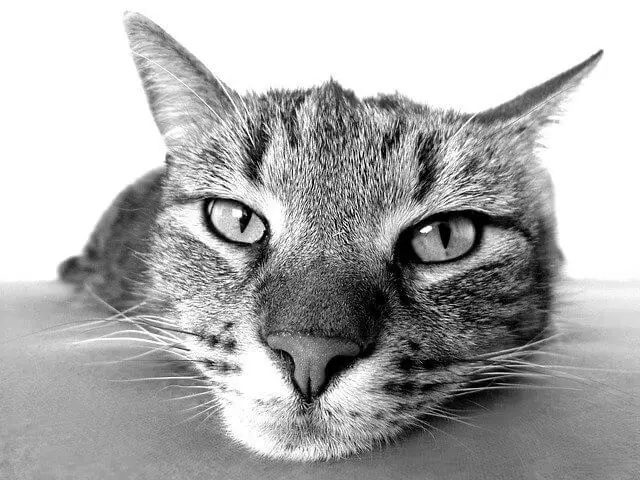Creating a Calming Environment for Cats: A Guide for Feline Serenity
Introduction:
Cats are known for their independent and sometimes aloof nature, but they too can benefit from a calming environment. Just like humans, cats can experience stress and anxiety, which can negatively impact their overall well-being. In this article, we will explore the importance of a calming environment for cats and the benefits it can bring to their lives.
Understanding the Importance of a Calming Environment for Cats:
Cats are highly sensitive creatures that thrive in a peaceful and secure environment. A calming space allows them to feel safe, reducing their stress levels and promoting relaxation. A stress-free environment can also contribute to better physical health, improved behavior, and a stronger bond between you and your feline friend.
Benefits of a Calm Space for Cats:
A calming environment has numerous benefits for cats. It can help reduce anxiety, aggression, and destructive behavior. Cats in a calm space are more likely to have better sleep quality and overall mental well-being. Additionally, a calm environment can aid in faster recovery from illness or surgery.
Setting Up a Safe and Comfortable Space for Your Feline Friend:
1. Choosing the Right Location for Your Cat’s Calming Space:
Select a quiet and low-traffic area of your home where your cat can retreat to when they need a break. It should be away from noisy household appliances and areas with high foot traffic.
2. Providing a Cozy Bed or Resting Area:
Cats love having a designated space to relax and sleep. Provide a comfortable bed or a soft blanket in their calming space to create a cozy and inviting atmosphere.
3. Ensuring Proper Temperature and Lighting:
Maintain a comfortable temperature in your cat’s calming space. Cats prefer a slightly warmer environment, so consider using a heated bed or a heating pad during colder months. Ensure there is ample natural light or provide soft, ambient lighting to create a soothing atmosphere.
Reducing Noise and Distractions:
1. Minimizing Loud Noises and Sudden Sounds:
Loud noises can startle and stress cats. Minimize sudden sounds by closing doors and windows, using noise-cancelling curtains, or providing a white noise machine to mask disruptive sounds.
2. Tips for Dealing with Common Noise Sources:
Identify common noise sources in your home, such as the television or vacuum cleaner, and try to schedule these activities when your cat is not in their calming space. If that is not possible, gradually introduce these sounds to your cat, starting at a low volume, and gradually increasing it over time.
3. The Role of White Noise Machines and Music:
White noise machines and calming music can help drown out distracting sounds and create a more serene atmosphere for your cat. Experiment with different types of music, such as classical or nature sounds, to find what works best for your feline friend.
Creating a Soothing Atmosphere:
1. Utilizing Natural Scents and Pheromones:
Cats are highly sensitive to scents. Use natural scents like lavender or chamomile to create a calming atmosphere. You can also consider using synthetic feline pheromone sprays or diffusers to mimic the scent of a mother cat and promote a sense of security.
2. The Power of Aromatherapy for Cats:
While some essential oils can be toxic to cats, there are safe options that can promote relaxation. Consult with a veterinarian experienced in aromatherapy for cats to ensure the oils you use are safe and appropriate for your feline friend.
3. Indoor Plants and Their Calming Effect:
Some indoor plants, such as catnip, valerian, or cat thyme, have a calming effect on cats. Place these plants in your cat’s calming space to provide them with a natural source of relaxation. However, be cautious as there are also plants that can be toxic to cats, so research and choose cat-safe options.
Designing a Cat-Friendly Layout:
1. The Importance of Vertical Space:
Cats love to climb and explore. Provide vertical space, such as cat trees or shelves, for your cat to perch and observe their surroundings. This not only offers mental stimulation but also allows them to feel secure and in control of their environment.
2. Creating Hiding Spots and Elevated Perches:
In addition to vertical space, cats also appreciate hiding spots where they can retreat when they feel overwhelmed. Provide hiding spots such as covered beds or cardboard boxes. Elevated perches near windows can also offer a calming view of the outside world.
3. Access to Windows and Outdoor Views:
Cats enjoy watching birds and other outdoor activities. Place your cat’s calming space near a window or provide a window perch so they can enjoy the view and engage with the outside world.
Promoting Mental Stimulation and Relaxation:
1. Interactive Toys and Puzzles:
Keep your cat mentally stimulated and entertained by providing interactive toys and puzzle feeders. These activities engage their natural hunting instincts and provide a healthy outlet for their energy.
2. Regular Playtime and Exercise:
Dedicate time each day for interactive play sessions with your cat. Engage them in physical activities such as chasing toys, playing with a laser pointer, or using feather wands. Regular exercise helps cats release excess energy and promotes relaxation.
3. The Benefits of Catnip and Other Calming Treats:
Catnip is a natural herb that can induce a sense of calm and relaxation in cats. Use catnip-infused toys or treats to help your cat unwind. Additionally, there are other treats available that contain calming ingredients like chamomile or L-theanine, which can promote relaxation.
Managing Stress and Anxiety:
1. Identifying Signs of Feline Stress and Anxiety:
It’s important to be aware of signs of stress and anxiety in cats, which may include excessive grooming, hiding, aggression, or changes in appetite. Understanding your cat’s behavior will help you identify when they may need a more calming environment.
2. Techniques for Stress Reduction and Relaxation:
Implement stress reduction techniques such as gentle massages, slow blinking, and providing a routine to create a sense of predictability and security for your cat. Establishing a consistent daily schedule can help reduce anxiety.
3. Seeking Professional Help for Severe Cases:
If your cat’s stress or anxiety persists despite your efforts, consult with a veterinarian or a professional animal behaviorist. They can provide guidance and recommend additional strategies or medications to help manage your cat’s stress levels effectively.
FAQs (Frequently Asked Questions):
1. How long does it take for a cat to adjust to a new environment?
The time it takes for a cat to adjust to a new environment can vary. Some cats may adapt quickly within a few days, while others may take several weeks or even months. Patience and providing a calming environment can help ease the transition.
2. Can I use essential oils for my cat’s calming environment?
Some essential oils are toxic to cats and should be avoided. Consult with a veterinarian experienced in aromatherapy for cats to ensure the oils you use are safe and appropriate for your feline friend.
3. Is it possible to create a calming environment for cats in a small apartment?
Yes, it is possible to create a calming environment for cats in a small apartment. Utilize vertical space, provide hiding spots, and offer interactive toys and puzzles to keep your cat mentally stimulated. Ensure there is a cozy resting area and access to windows for natural light and outdoor views.
4. My cat is easily stressed during car rides. How can I create a calming environment in the car?
To create a calming environment in the car, use a carrier that provides a sense of security and cover it with a towel or blanket to reduce visual stimulation. Play calming music or use a synthetic feline pheromone spray in the carrier. Consult with a veterinarian for additional tips or medications if necessary.
5. Are there any specific plants that can be harmful to cats and should be avoided in their calming space?
Yes, there are several common indoor plants that are toxic to cats, such as lilies, aloe vera, and pothos. Research and choose cat-safe plants such as catnip, valerian, or spider plants to ensure the well-being of your feline companion.
Conclusion:
Creating a calming environment for your cat is crucial for their overall well-being. By understanding the importance of a peaceful space, you can provide your feline friend with the serenity they need to thrive. Tailor the environment to suit your cat’s individual preferences and needs, and enjoy the benefits of a calm and serene space for both you and your feline companion.








